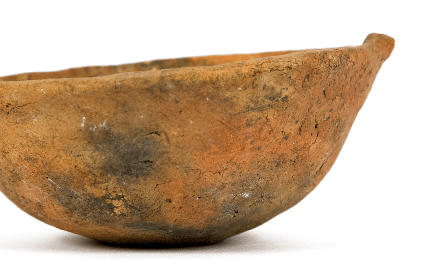
The Department of the Paleolithic and Mesolithic Periods
The collections of the Department of the Paleolithic and Mesolithic Periods consist of the finds coming from the oldest period of population of the Polish territory by prehistoric man - from about 120 000 to 4 000 BC. These are mainly flint tools and waste from their production and animal bones. The collections of the department include the collections gathered from the seventies of the nineteenth century until the interwar period in the Museum of Industry and Agriculture, the Erazm Majewski Prehistoric Museum at the Warsaw Scientific Society, by the National Group of Prehistoric Monument Conservators and by individuals. The diversity of sources of these collections is the reason that they include materials from many regions of the country - Mazovia, Podlasie, Małopolska and Lublin region, as well as the lands that were once within the boundaries of the Polish state: western Belarus, Ukraine and Lithuania. There are also numerous collections of paintings bought in the late nineteenth and early twentieth century in the antique markets in other European countries, including France. After the World War II the staff of the department made up its resources running their own archeological excavations, mainly in the central and northeastern Poland. The most interesting collection include famous Paleolithic materials from the caves of the Jura Krakowsko - Wieluńskia (inter alia caves, Ciemna, Nietoperzowa, Jama and Okiennik), Paleolithic and Mesolithic sets of flint artifacts from the complex of sites in Rydno near Skarżysko - Kamienna, involving the exploitation and processing of the red mineral dye - hematite, present there, with numerous dune sites in the Warsaw area (eg. Świdry and Płudy), in the eastern Poland (eg. Stańkowicze and Słochy Annopolskie) and in the north - eastern Poland (eg. Augustow - Wójtowskie Włóki and Woźna Wieś). The unique in the European scale is the rich furnishings of the Mesolithic tomb of a man from Janisławice more than 6 500 years old.